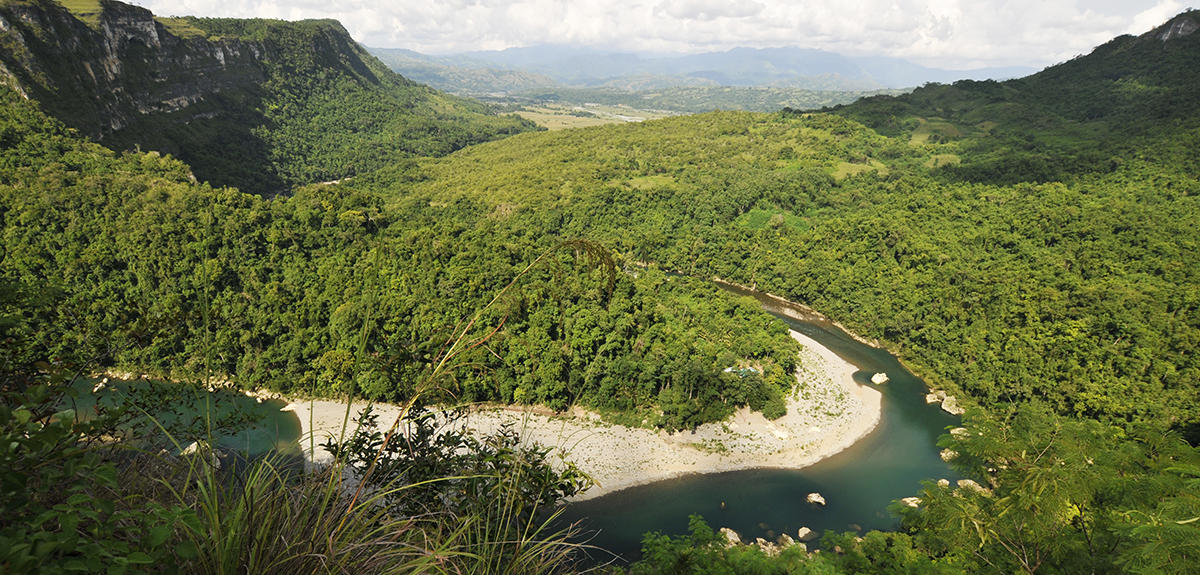You are here
A New Human Species Discovered in the Philippines

What brought about the discovery1 of this new human species?
Clément Zanolli:2 The story goes back to 2007 when a metatarsal — a small bone in the foot — dating back approximately 70,000 years, was found in an old part of a cave. The bone was identified as human, but it didn’t entirely resemble that of Homo sapiens. The question was whether it belonged to an abnormal individual, or whether we were dealing with another human species. Research was ultimately conducted in the field, leading to the discovery in 2015 of other remains, including 7 teeth, phalanges, and a portion of a femur bone belonging to three individuals. We then had to determine whether it was indeed a new species, knowing that the fossils may have matched those belonging to the ancestors of the Negrito population in the Philippines.
How did you determine that the fossils came from a new species?
C. Z.: It was the fruit of an interdisciplinary effort. On a technical level, 3D analysis provided information on the well-preserved internal structure of the fossils, despite a sometimes damaged external structure. I studied the teeth in detail. We used X-ray scanners to observe the dentin — the mineral tissue of the tooth — by digitally removing the enamel cap located above it. Morphological analysis notably showed differences in the positions and height of the dentin horns in comparison to other species such as Homo sapiens, Homo erectus, and Homo floresiensis.
More generally, the teeth presented so-called ‘modern’ components, similar to those found among the last Homo erectus. The bones, however, signalled something a little different. My colleagues observed highly-developed muscle insertion crests, as well as a certain curve of the phalanges resembling the morphology of Australopithecus. Finally, this combination of characteristics that seems archaic regarding the bones, but somewhat more modern concerning the teeth, enabled us to conclude that we were dealing with a new species.
During which period are these individuals thought to have lived?
C. Z.: We have determined that the species lived at least 50,000 years ago, and probably between 70,000 and 100,000 years ago. During that period, we know of at least three other human taxons in this part of Southeast Asia. There was Homo sapiens, who arrived in China more than 100,000 years ago, Homo erectus, who survived in Java up until 70,000 years ago, and Homo floresiensis. We should probably add a mysterious human group, the Denisovans, for whom we have very few fossils; DNA analysis has shown that they were similar to Neanderthals, but were found in Asia. This now makes four or five hominin species that lived during the same period, and who potentially came across one another.
What do we know about the origins of Homo luzonensis and how these individuals arrived in the Philippines?
C. Z.: We know that during the last two million years, the Philippines, unlike Indonesia, has been separated from the continent by kilometres of inlets. So how was Homo luzonensis able to reach Luzon Island? This could have happened by accident, for example in the wake of a tsunami that carried away a patch of land from the continent. Identifying the potential ancestors of Homo luzonensis is also of great interest. Was it Homo erectus? Was the new species derived from an older branch of Homo floresiensis? The biological and geographical origins are two essential questions that we will need to answer.
Would analyses help to find out more about these individuals?
C. Z.: To date, the behavioural and biological data is fairly limited. We have already conducted all possible non-destructive tests. Isotope analysis would provide more clues on the palaeoecological and food environments. Other studies on the biomechanics of small bones, phalanges, and metatarsals would yield information on the locomotive habits and behaviour of these individuals.
More generally, what does this finding contribute to research?
C. Z.: This discovery once again improves our knowledge of the diversity of hominids. A few decades ago we knew of no more than a dozen species of human fossils. Today we have almost tripled this sample group. In our research, it’s fascinating to think that we are still not fully aware of the diversity that existed, that something still escapes us. For what is a hundred thousand years in the overall history of human evolution?
Explore more
Author
After a degree in environmental studies at Paul Sabatier University in Toulouse, then in science journalism at Paris-Diderot University in Paris, Anaïs Culot worked in media relations at the CNRS and now collaborates with various magazines, including CNRS Le Journal, I'MTech and Science & Vie.











